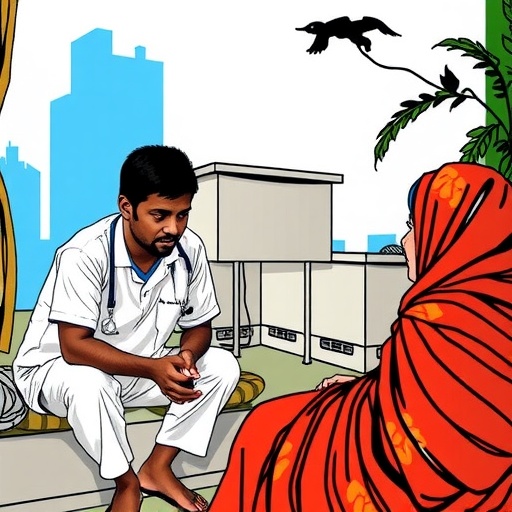Early Childhood Workforce: revitalising policy to enable quality – EduResearch Matters

Report on Policy Coherence in Australian Early Childhood Education and Care (ECEC) and its Alignment with Sustainable Development Goals
Introduction: The Imperative for Policy Alignment in ECEC
The quality and safety of Early Childhood Education and Care (ECEC) in Australia are under intense scrutiny, prompting government action through new safety measures, regulatory changes, and workforce investment. This report analyses the fundamental policy frameworks governing the sector, highlighting critical disconnections that impede progress towards key United Nations Sustainable Development Goals (SDGs). The analysis focuses on how inconsistencies between national quality frameworks and industrial relations instruments undermine efforts to achieve SDG 4 (Quality Education), SDG 8 (Decent Work and Economic Growth), and SDG 5 (Gender Equality).
Core Policy Frameworks and Inherent Contradictions
The Australian ECEC sector is governed by three principal policies which, while well-intentioned, create a fragmented and often contradictory operational environment for educators.
Foundational Policy Pillars
- The National Quality Framework (NQF): Established in 2012, the NQF aims to improve educational outcomes for children. It mandates a collaborative approach among educators as a key indicator of quality, directly supporting the objectives of SDG 4.
- The Early Years Learning Framework (EYLF): As an approved learning framework under the NQF, the EYLF requires educators to practice inclusively, reinforcing the principles of quality and equity central to SDG 4.2, which aims to ensure all children have access to quality early childhood development and care.
- Modern Awards: These industrial instruments sit outside the NQF and legislate the pay and conditions for over 70% of the ECEC workforce. Their structure is inherently individualistic and hierarchical, creating direct conflict with the collaborative ethos of the NQF and EYLF.
Policy Disconnects as a Barrier to Sustainable Development
A foundational analysis reveals a significant tension between the policy goals. The NQF and EYLF promote teamwork and shared responsibility to achieve SDG 4 (Quality Education). However, the modern awards enforce disparate pay scales and role delineations that discourage this collaborative model. This contradiction directly impacts SDG 8 (Decent Work and Economic Growth) by creating inequitable working conditions and undermining the professional recognition essential for a stable, motivated workforce. As the ECEC sector is predominantly female, these conditions also represent a significant challenge to achieving SDG 5 (Gender Equality).
Research Findings: Policy in Practice and Workforce Implications
Empirical research conducted in four long day care centres in Queensland provides insight into how these policy contradictions manifest in daily practice and contribute to systemic workforce challenges.
The Practical Challenge of Reconciling Policies
The research, involving analysis of centre documents and focus groups with educators, demonstrates that teams grapple to reconcile conflicting policy directives. There is a pervasive, taken-for-granted expectation that all educators “pitch in” to meet the quality standards of the NQF and EYLF. This sits in direct tension with the modern awards, where position descriptions and wage levels do not remunerate every staff member for contributing to all tasks. This lack of policy coherence undermines the creation of effective and accountable institutions, a core target of SDG 16 (Peace, Justice and Strong Institutions).
Workforce Instability and its Impact on SDG Targets
The unresolved policy tensions exacerbate long-standing workforce instability, which is a primary obstacle to achieving quality ECEC and related SDG targets. Key challenges include:
- Persistent difficulties in attracting and retaining qualified educators, leading to high attrition.
- An ECEC Workforce Capacity Study forecasting a demand for an additional 54,000 educators by 2034.
- Ongoing calls for improved wages and conditions to reflect the profession’s value.
These issues represent a failure to provide SDG 8 (Decent Work) for a critical sector. A stable, well-compensated, and professionally recognised workforce is the essential foundation for delivering on the promise of SDG 4 (Quality Education) for all children.
Strategic Opportunities for Policy Realignment
Doctoral research has identified three primary areas of complexity where targeted policy reform could create greater coherence and advance Australia’s commitment to the SDGs.
A New Approach to ECEC Policy Complexities
- Reconciling Staffing Structures with Collaborative Practice: Current staffing structures must comply with the hierarchical modern awards, yet quality indicators in the NQF and EYLF demand collaboration. Policy must be developed to formally recognise and reward teamwork, ensuring a fair distribution of roles and responsibilities. This would directly address tensions impacting SDG 8 and strengthen the collaborative practice needed for SDG 4.
- Clarifying the Role of the Degree-Qualified Teacher: The introduction of degree-qualified teachers was intended to lift educational quality. However, without clear policy guidance on their specific roles and contributions to decision-making, their expertise is often underutilised. Policy that explicitly harnesses their skills is crucial for maximising the return on investment in higher qualifications and making tangible progress towards SDG 4.
- Empowering the Educational Leader: Each centre must appoint an Educational Leader, but the role lacks formal authority and can be held by individuals with a wide range of qualifications. To embed high-quality pedagogy, policy must empower this position, enabling the Educational Leader to enact formal leadership. This strengthens educational outcomes (SDG 4) and promotes leadership opportunities, contributing to SDG 5 (Gender Equality).
Conclusion: A Strategic Path Forward
Forthcoming research will offer a strategic plan with short, medium, and long-term actions for policymakers and providers. By addressing the identified policy contradictions, Australia can move towards a more coherent and effective ECEC system. This realignment is essential not only for improving educational outcomes for children but also for fulfilling national commitments to the Sustainable Development Goals, particularly those ensuring quality education, decent work, gender equality, and strong, effective institutions.
Analysis of Sustainable Development Goals (SDGs) in the Article
-
Which SDGs are addressed or connected to the issues highlighted in the article?
The article on Early Childhood Education and Care (ECEC) in Australia directly addresses and connects to the following Sustainable Development Goals:
-
SDG 4: Quality Education
This is the central theme of the article. The entire text revolves around the “quality of education and care for children,” the effectiveness of educational policies like the National Quality Framework (NQF) and the Early Years Learning Framework (EYLF), and the goal of improving “educational outcomes for children.”
-
SDG 8: Decent Work and Economic Growth
The article extensively discusses the ECEC workforce, highlighting issues that are core to the principle of decent work. It points to “disparate pay and conditions,” “persistent calls for increased wages,” high workforce attrition, and the need for “professional recognition.” The conflict between collaborative work expectations and legislated industrial conditions (“modern awards”) is a key focus, directly relating to the quality of employment.
-
SDG 10: Reduced Inequalities
This goal is relevant through the article’s focus on inequalities within the ECEC workforce. The analysis of “modern awards” reveals a “hierarchical approach” that dictates wages and responsibilities, creating disparities. The article highlights the tension between an expectation that “everyone pitches in with everything” and the reality that “not everyone is paid to do everything,” pointing to a need to adopt policies that achieve greater equality in pay and responsibilities.
-
-
What specific targets under those SDGs can be identified based on the article’s content?
Based on the article’s discussion, the following specific targets can be identified:
-
Under SDG 4: Quality Education
-
Target 4.2: By 2030, ensure that all girls and boys have access to quality early childhood development, care and pre-primary education so that they are ready for primary education.
Explanation: The article is fundamentally about achieving this target in the Australian context. It discusses the “global quest for quality ECEC,” the implementation of the “National Quality Framework (NQF)” and the “Early Years Learning Framework (EYLF)” specifically to improve the quality of education and care for young children. -
Target 4.c: By 2030, substantially increase the supply of qualified teachers.
Explanation: The article directly addresses this by highlighting “workforce shortages,” the “persistent issues of attracting and retaining qualified educators,” and a forecasted “additional demand of 54,000 educators and teachers by 2034.” The “National Workforce Strategy 2022-2031” and the introduction of the “degree-qualified teacher” are policy responses aimed at increasing the supply and quality of the ECEC workforce.
-
Target 4.2: By 2030, ensure that all girls and boys have access to quality early childhood development, care and pre-primary education so that they are ready for primary education.
-
Under SDG 8: Decent Work and Economic Growth
-
Target 8.5: By 2030, achieve full and productive employment and decent work for all… and equal pay for work of equal value.
Explanation: The article’s focus on “disparate pay and conditions,” “persistent calls for increased wages,” and the problems with the “modern awards” directly relates to the call for decent work and equal pay. The research described aims to resolve tensions so that educators’ roles, responsibilities, and remuneration are fairly aligned. -
Target 8.8: Protect labour rights and promote safe and secure working environments for all workers.
Explanation: The article points to a lack of a secure working environment by stating that “workforce stability remains an issue yet to be resolved” and citing “high attrition from the sector.” The “modern awards” are described as “legislated industrial conditions,” which are a mechanism for protecting labour rights, yet the article suggests they are contributing to workforce problems.
-
Target 8.5: By 2030, achieve full and productive employment and decent work for all… and equal pay for work of equal value.
-
Under SDG 10: Reduced Inequalities
-
Target 10.4: Adopt policies, especially fiscal, wage and social protection policies, and progressively achieve greater equality.
Explanation: The article’s core analysis is a critique of how current policies create inequality. It describes the “individualistic and hierarchical approach of the modern awards, which dictates each educator’s wage and responsibilities” in contrast to collaborative frameworks. The author’s research aims to “realign the early childhood policy landscape” to address these very inequalities.
-
Target 10.4: Adopt policies, especially fiscal, wage and social protection policies, and progressively achieve greater equality.
-
-
Are there any indicators mentioned or implied in the article that can be used to measure progress towards the identified targets?
The article mentions or implies several indicators that can be used to measure progress:
-
For SDG 4 Targets:
- Quality rating of ECEC services: The NQF’s “assessment and quality rating process” is a direct indicator used to measure the quality of education and care.
- Supply and demand of educators: The article explicitly mentions the forecasted “additional demand of 54,000 educators and teachers by 2034,” making the number of available educators a key indicator.
- Proportion of qualified educators: The focus on “attracting qualified educators” and the “introduction of the degree-qualified teacher” implies that the percentage of the workforce with formal qualifications is a critical measure of progress.
- Educator attrition rates: The article identifies “high attrition from the sector” as a major problem, making retention and turnover rates a clear indicator of workforce stability and quality.
-
For SDG 8 Targets:
- Wage levels and pay disparities: The mention of “disparate pay and conditions,” “prescribed wage levels,” and “persistent calls for increased wages” makes wages a direct indicator of decent work.
- Workforce stability: The statement that “workforce stability remains an issue yet to be resolved” establishes stability (or turnover rate) as an indicator of a secure working environment.
- Professional recognition: The “National Workforce Strategy” goal of “improving professional recognition” is mentioned as a key action, making the perceived status of the profession an implied indicator.
-
For SDG 10 Target:
- Wage and responsibility alignment: The core tension described between collaborative expectations (NQF/EYLF) and hierarchical pay structures (“modern awards”) implies that the degree of alignment between an educator’s pay, responsibilities, and qualifications is a key indicator of equality within the sector.
- Policy coherence: The author’s identification of “disconnections between government documents and inconsistencies” suggests that the level of alignment and coherence across the NQF, EYLF, and modern awards is an indicator of progress toward a more equitable policy landscape.
-
-
Create a table with three columns titled ‘SDGs, Targets and Indicators” to present the findings from analyzing the article. In this table, list the Sustainable Development Goals (SDGs), their corresponding targets, and the specific indicators identified in the article.
SDGs Targets Indicators (Identified in the Article) SDG 4: Quality Education 4.2: Ensure access to quality early childhood development, care and pre-primary education. 4.c: Substantially increase the supply of qualified teachers.
- Quality rating of ECEC services (from the NQF “assessment and quality rating process”).
- Number/supply of educators (forecasted demand of 54,000).
- Proportion of the workforce that is qualified (e.g., “degree-qualified teacher”).
- Educator attrition rates (“high attrition from the sector”).
SDG 8: Decent Work and Economic Growth 8.5: Achieve full and productive employment and decent work for all, and equal pay for work of equal value. 8.8: Protect labour rights and promote safe and secure working environments.
- Wage levels and pay disparities (“disparate pay and conditions”).
- Workforce stability and turnover rates (“workforce stability remains an issue”).
- Level of professional recognition.
SDG 10: Reduced Inequalities 10.4: Adopt policies, especially fiscal, wage and social protection policies, and progressively achieve greater equality. - Degree of alignment between pay, qualifications, and responsibilities.
- Coherence and lack of contradiction across wage and education policies (NQF, EYLF, modern awards).
Source: blog.aare.edu.au

What is Your Reaction?
 Like
0
Like
0
 Dislike
0
Dislike
0
 Love
0
Love
0
 Funny
0
Funny
0
 Angry
0
Angry
0
 Sad
0
Sad
0
 Wow
0
Wow
0


-1920w.png?#)






































































